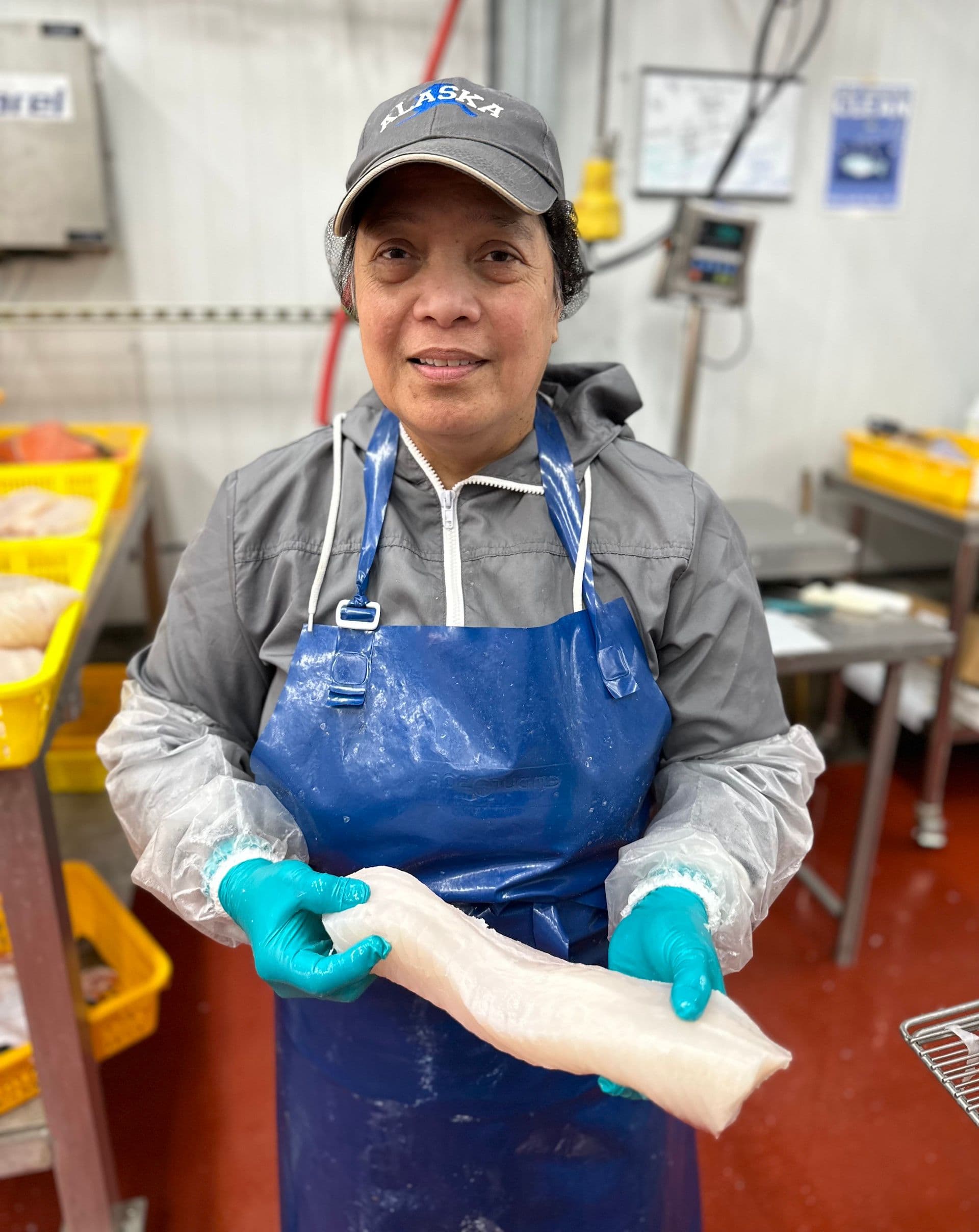Alaska’s seafood industry harvests two-thirds of all seafood caught in the United States. That’s more wild-caught seafood than all other states combined. And while Alaska is largely known for its oil fields, today sustainable seafood is Alaska’s largest international export by volume and value.* Yet Alaska’s dominance in the seafood sector didn’t emerge overnight — it was built by generations of hardworking men and women who lived and worked in some of the most remote and rugged coastal towns in the world.
Who were they? In large part, they were Filipino immigrants.
Those unfamiliar with the rich cultural tapestry of Alaska’s seafood industry may be surprised to find that their seafood is brought to them in no small part thanks to the contributions of a thriving Filipino community right here in Alaska.

As of 2015, the U.S. Census Bureau estimated Alaska’s Filipino population at over 26,000, making it one of the state’s largest ethnic groups.** Filipino immigrants are an essential part of Alaska’s seafood story and play a crucial role having built and now sustained Alaska’s position as a leading seafood producer for over 100 years. Despite this, their contributions to the industry have often been overlooked.
The Beginning of Alaskeros in Alaska
Filipinos have been in Alaska since the 1700s, but their immigration to the United States markedly increased during the years following the Spanish-American War when the United States replaced Spain as the colonial power in the Philippines. At the turn of the 20th century, many young men traveled from the Philippines to the United States looking to advance their education and professional opportunities.
Among these migrants, many ventured to Alaska, drawn by the promise of work in the fast-growing fishing and mining industries. This group of men, who came to be described as “Alaskeros” (a combination of “Alaska” and “trabajeros” which is Spanish for “workers”), were a group of seasonal laborers who primarily worked in Alaska’s canneries and mines.

The arrival of Alaskeros marked the beginning of a transformative era in Alaska’s seafood industry. They arrived as the canning industry in Alaska boomed — echoing soaring demand for canned salmon. Alaskeros became synonymous with the workforce of these canneries where they processed and canned salmon that would be shipped worldwide. Workers would be tasked with various roles, from cleaning and filleting fish to operating machinery and packaging seafood.
Despite facing discrimination and segregation, Filipino seafood workers played a pivotal role in the growth and development of canneries. Their essential labor, often performed under some of the harshest conditions, was instrumental in establishing Alaska as a prominent seafood producer on the global stage during this era.
Making Strides for All
Alaskeros were determined to combat injustice and advocate for fair treatment in the workforce. In 1933, they formed the first-ever Filipino-led workers union in the United States to advocate for the rights and working conditions of cannery workers and farm laborers. While there’s always more to be done, the work of these early pioneers paved the path for more fair and equitable standards in today’s seafood industry, not just for Filipino workers, but for all people.
Over the decades, the Filipino population in Alaska has grown significantly, contributing to the state’s cultural diversity and economic prosperity. For example, the Alaska seafood industry continued to grow throughout the 20th century, experiencing a peak in the 1980s when, once again, Filipino and Filipino American labor facilitated the expansion of the industry — working long hours when processing plants operated around the clock to meet high demand within a tight window.
For many, working in an Alaskan seafood processor was a means to support themselves and their families, offering a chance to earn a living and build a life surrounded by the unique beauty of Alaska’s small-town coastal regions. Today, seafood processors like Kodiak Island WildSource continue to boast a predominantly Filipino workforce, reflecting that Alaska’s Filipino community continues to be an important player in the industry.
Filipino Cultural Influence in Alaska
Despite the challenging nature of seafood processing, camaraderie amongst workers is built through jokes shared on the “slime line” (fish processing line), commiseration, and most especially food. Perhaps no place is more representative of the rich cultural diversity of Alaska than lunchtime at a seafood processing plant. There, Native Alaskan, Latino, Filipino, and White workers sit and share a communal meal. Often these meals display a rich intersection of workers’ cultures where heaping trays of pancit and chicken adobo are served alongside salmon, traditional frybread, or pozole.
This unique patchwork of cultures began when Filipino workers cooked and shared their traditional foods while communally living in cannery company bunkhouses. These shared spaces became the crossroads for many cultures and in particular for Filipino and Alaska Native Lingít peoples to meet and interweave through cultural exchange and often marriage. Today, many young Alaskans boast both Alaska Native and Filipino heritage.

Through intermarriage and cultural exchange, Filipino immigrants who settled in Lingít territories embraced aspects of Lingít and White-settler culture while maintaining their Filipino heritage. This cultural fusion is evident in various aspects of life, including food, language, art, and ceremonies, reflecting a rich tapestry of diversity within the community.
Looking back, we see that while seafood processing may have brought many Filipino immigrants to Alaska, building a life here prompted many to stay. Today, generations of Filipino-Alaskans have contributed to Alaska’s seafood industry and to every sector of Alaskan life, enriching and strengthening the fabric of Alaskan society.
*Statistics from “FOR RELEASE: 2022 Economic Value of Alaska’s Seafood Industry Report,” January 12, 2022, Alaska Seafood Marketing Institute
**Statistics from “Filipinos in Alaska,” KTOO, Alaska Public Radio Network



